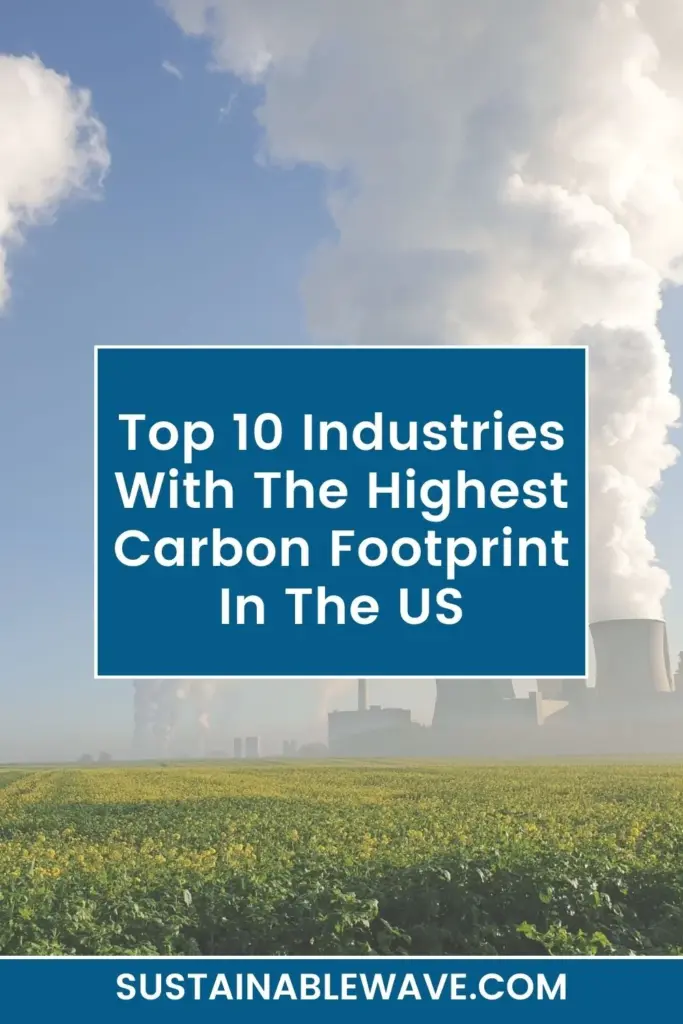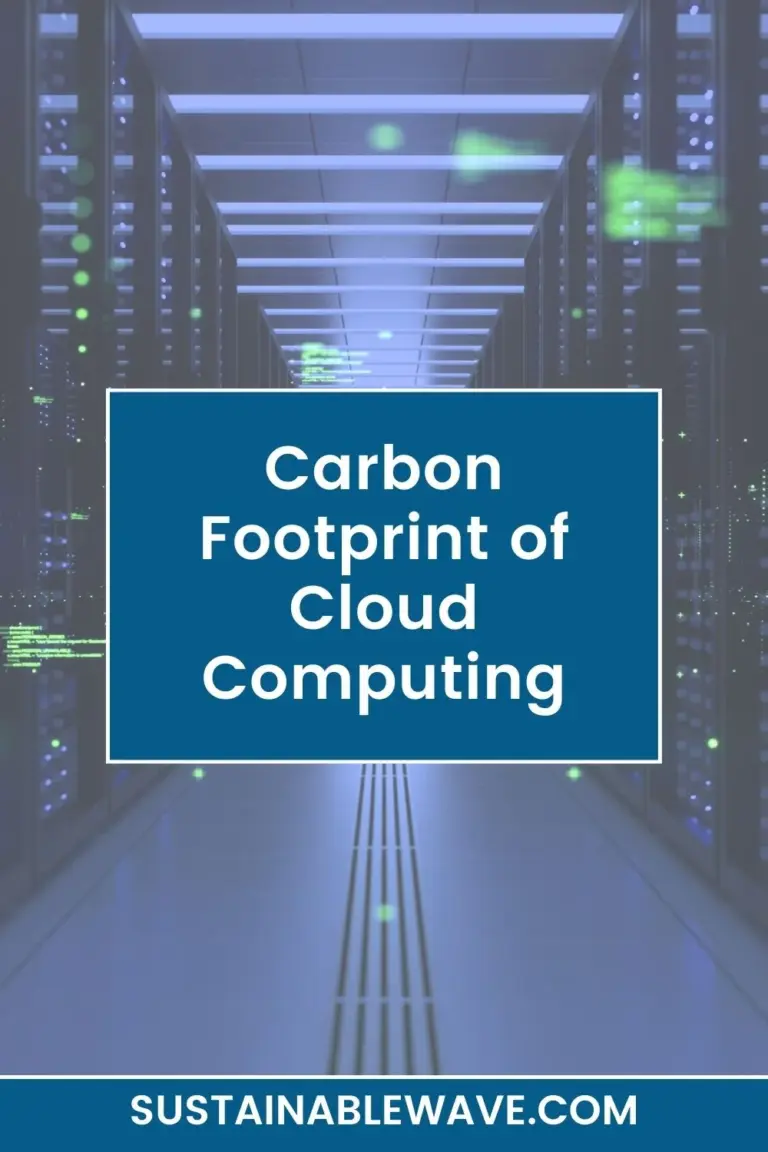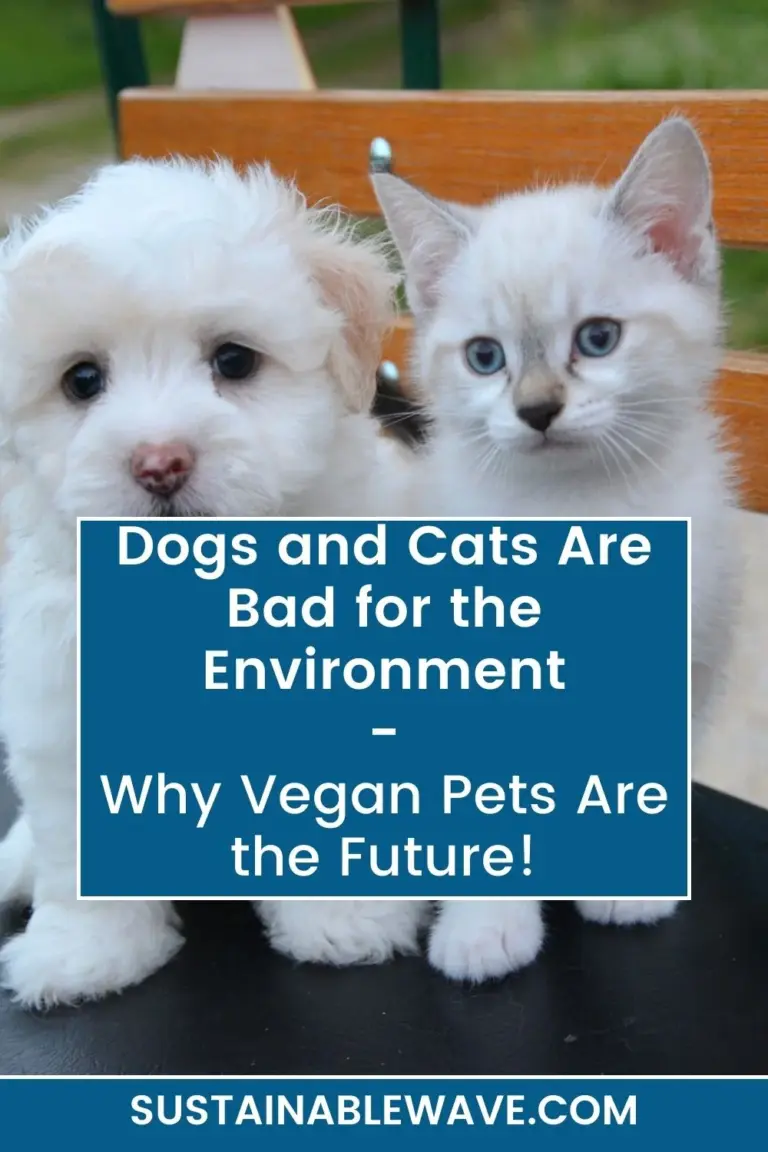Ever wondered which products have the most significant impact on our environment?
In the quest to combat climate change, understanding and reducing our carbon footprint becomes imperative. In this article, we’ll dive deep into the Top 10 Products With The Highest Carbon Footprint In The US.
The results may astonish you!
Top 10 Industries With The Highest Carbon Footprint In The US

With rising global concerns about climate change, the spotlight is on products and industries contributing to the carbon footprint.
Here’s a detailed examination of the ten culprits causing the most carbon emissions.
Automobiles and Their Impact
Automobiles, especially gasoline and diesel models, significantly influence the global carbon footprint.
- Manufacturing Phase: Energy-intensive with activities like metal mining, plastic production, and assembling thousands of components.
- On-road Emissions: Combustion engines burn fuel, emitting CO2 directly.
- Solution Insights: Transition to electric vehicles and enhance public transport systems to diminish the carbon imprint.
Red Meat and the Environment
The environmental repercussions of red meat production and consumption are profound.
- Methane Production: Cattle release methane during digestion, a greenhouse gas far more potent than CO2.
- Deforestation: Forests get cleared to provide grazing pastures, leading to the loss of natural carbon sinks.
- A Conscious Choice: Recognizing the environmental cost behind every steak helps inform sustainable dietary decisions.
Fast Fashion’s Hidden Costs
The allure of fast fashion conceals significant environmental challenges.
- Material Demand: Quick fashion turnover leads to consistent material demands, with synthetic, non-biodegradable fabrics in the limelight.
- Waste Concerns: Short-lived clothes frequently land in landfills, causing waste management issues.
- Chemical Footprint: The use of dyes and chemicals can lead to water pollution, affecting aquatic ecosystems.
- Consumer Power: Opting for sustainable fashion reduces the carbon footprint of our wardrobe choices.
Electronics and Their Lifecycles
The omnipresence of electronics comes with a substantial environmental cost.
- Resource Extraction: Mining of metals like gold and rare earth elements is resource-intensive and environmentally damaging.
- Energy Consumption: The production phase relies heavily on non-renewable energy.
- E-Waste Challenge: End-of-life electronics, when not recycled, release toxic substances into the environment.
- Mindful Usage: Emphasizing sustainable brands and proper disposal can counteract some of the carbon footprints of our devices.
Air Travel’s Sky-High Emissions
The convenience of air travel comes with significant carbon consequences.
- Fuel Combustion: Airplanes rely heavily on fossil fuels, releasing vast amounts of CO2 per flight.
- High Altitude Impact: Emissions at cruising altitude have a more potent greenhouse effect than those at ground level.
- Frequent Flyers: Increased global mobility and tourism have led to more flights, further increasing the sector’s carbon footprint.
- Green Alternatives: Investments in sustainable aviation fuels and electric planes may offer a future with reduced emissions.
Coal-Based Power Plants

Coal remains a dominant energy source, but its environmental ramifications are hard to ignore.
- CO2 Emissions: Coal combustion releases more carbon dioxide than any other fossil fuel.
- Other Pollutants: Beyond CO2, coal plants emit sulfur dioxide, nitrogen oxides, and particulates, which impact air quality.
- Water Usage: Coal power plants are water-intensive, leading to potential resource depletion in the areas they operate.
- Transitioning Away: The shift to renewable energy sources like wind, solar, and hydro can mitigate coal’s environmental impact.
Plastic Products and Oceans
Our reliance on plastics poses a direct threat to marine ecosystems.
- Non-biodegradable: Most plastics can take hundreds to thousands of years to degrade, persisting in the environment.
- Marine Debris: An estimated 8 million metric tons of plastic enter the oceans yearly, impacting marine life.
- Microplastics: Tiny plastic fragments pose ingestion risks to sea creatures, entering the food chain and potentially impacting human health.
- Reducing Dependency: Embracing biodegradable products and boosting recycling efforts can help curb the plastic tide in our oceans.
Processed Foods and Carbon Footprint
The ubiquity of processed foods carries a hidden carbon cost.
- Intensive Production: Processed foods often involve energy-consuming manufacturing processes, from refining to packaging.
- Transport Emissions: These products, with their global demand, lead to significant transport-related emissions.
- Preservatives & Additives: Chemicals used can result in additional environmental stress during their production and disposal.
- Mindful Consumption: Opting for local, organic, and minimally processed foods can reduce the carbon footprint of our diets.
Home Heating and Cooling Systems
Maintaining comfortable home temperatures has a hidden carbon cost.
- Energy Intensive: Many heating and cooling systems rely on electricity from fossil fuels, leading to significant CO2 emissions.
- Inefficient Systems: Older or poorly-maintained systems can use more energy than necessary, exacerbating their environmental impact.
- Refrigerants: Some cooling systems utilize refrigerants that, if leaked, are potent greenhouse gases.
- Eco-Friendly Solutions: Switching to energy-efficient systems and sustainable energy sources can significantly reduce a household’s carbon footprint.
Cosmetics and the Beauty Industry
The pursuit of beauty has environmental implications not immediately visible on the surface.
- Resource Extraction: Many cosmetic products require rare minerals and ingredients, leading to habitat disruption and over-extraction.
- Chemical Footprint: The production and disposal of synthetic ingredients can lead to water and soil pollution.
- Packaging Waste: The industry often employs single-use plastics, contributing to the global plastic waste problem.
- Ethical Choices: Embracing cruelty-free and eco-friendly brands can pave the way for sustainable beauty routines.
Steps Towards a Greener Future
There’s a global movement toward a more sustainable future, and every step counts.
- Renewable Energy: Investing in and transitioning to wind, solar, and hydro energy can significantly reduce global carbon emissions.
- Waste Reduction: Emphasizing recycling and composting, and reducing consumption can combat the growing waste issue.
- Sustainable Transportation: Electric vehicles, carpooling, and public transit can lower the carbon footprint of our commutes.
- Community Efforts: Grassroots movements, local initiatives, and individual choices play a pivotal role in shaping a sustainable future.
Final Words

The path to a sustainable future lies in understanding our carbon footprint and making informed choices.
While the Top 10 Industries With The Highest Carbon Footprint In The US have been highlighted, individual and collective actions can pave the way to a greener tomorrow.
Remember, every small step counts!
I’m Thomas, the owner of SustainableWave. Passionately promoting a sustainable planet. With experience in various eco-roles, I’ll share green tips, sustainability hacks, and personal eco-journeys on my blog.






